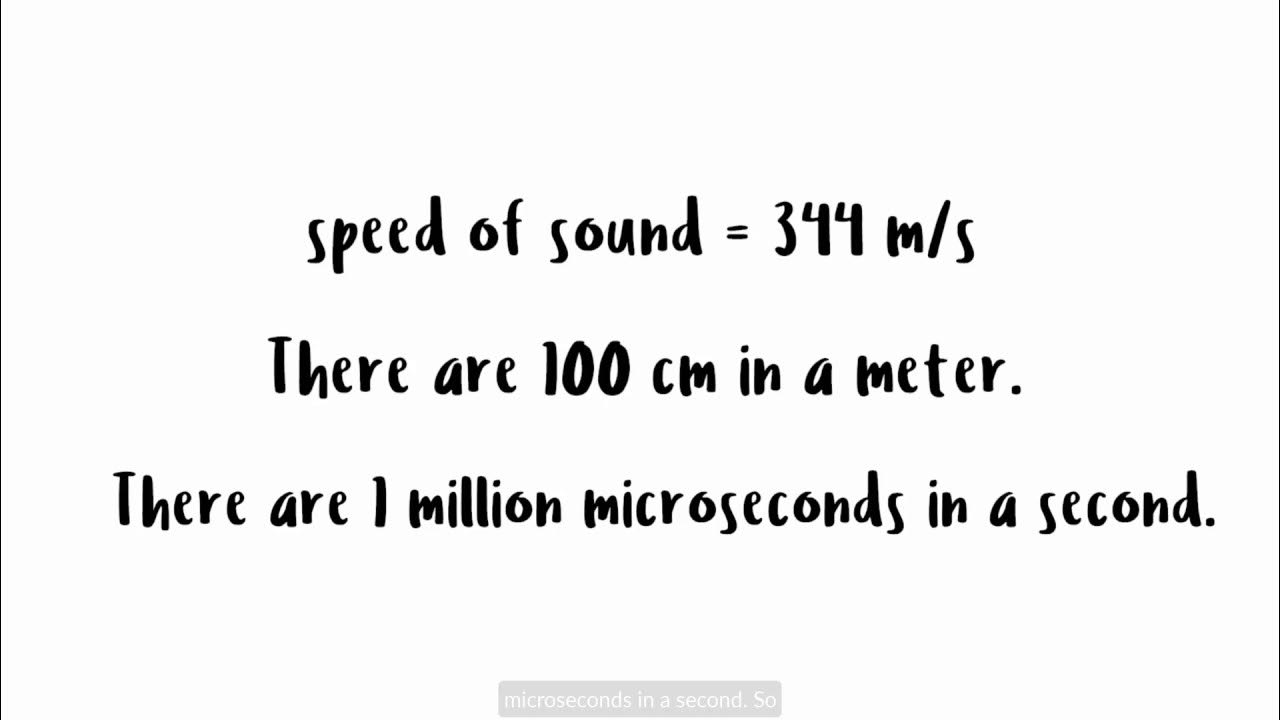How Do Ultrasonic Distance Sensors Work? - The Learning Circuit
Summary
TLDRIn this 'Learning Circuit' episode, Karen discusses ultrasonic distance sensors, explaining how they function similarly to echolocation in nature. She covers the science behind calculating distance using the time it takes for sound to reflect off objects and return, the role of transducers, and the differences between piezoelectric and capacitive types. Karen also touches on the practical applications, limitations, and the future of these sensors in compact electronics.
Takeaways
- 🐬 Ultrasonic sensors work on the principle of echolocation, similar to how dolphins and bats detect their surroundings.
- 🛰 The distance is calculated using the formula (1/2 * t * c), where t is the time for the sound to travel and c is the speed of sound.
- 🔊 The speed of sound varies by medium, being approximately 767 miles per hour in air and 4.3 times faster in water.
- 👂 Ultrasonic sensors operate beyond the audible range for humans, which is above 20 kHz.
- 🔌 These sensors are transducers, converting electrical signals into sound waves and vice versa.
- 💠 Piezoelectric and capacitive are the two types of ultrasonic transducers, each with different mechanisms for generating and detecting sound.
- 📡 Capacitive transducers can be micro-machined, allowing for compact and integrated designs.
- 📊 The detection range and area of an ultrasonic sensor depend on its frequency and the angle at which sound is emitted.
- 🚫 Factors like object size, distance, material, and shape can affect the sensor's ability to detect objects.
- 💧 Ultrasonic sensors are not affected by visual characteristics and can even detect clear plastic and water surfaces.
- 🔩 Commonly used ultrasonic sensors for hobbyist projects come pre-built into boards with pins for easy integration.
Q & A
What is an ultrasonic sensor and how does it function?
-An ultrasonic sensor detects the distance of an object without physical contact by emitting ultrasonic sound waves and measuring the time it takes for the sound to return after bouncing off the object.
What natural examples of echolocation are mentioned in the video?
-Dolphins and bats are examples of animals that use echolocation to detect their surroundings by emitting sound waves and interpreting the echoes that bounce back.
What is the formula used to calculate distance in ultrasonic sensors?
-The formula is ½ * t * c, where 't' is the time it takes for the ultrasound to travel to the object and back, and 'c' is the speed of sound.
Why is the distance formula multiplied by ½ in ultrasonic sensor calculations?
-The distance formula is multiplied by ½ because the sound wave travels to the object and back, so the actual distance is only half of the total travel time.
How do piezoelectric ultrasonic transducers work?
-Piezoelectric transducers use a crystal that flexes back and forth when an electric charge is applied, generating ultrasonic waves or detecting incoming waves by converting the vibration into electrical signals.
What is the difference between piezoelectric and capacitive ultrasonic transducers?
-Piezoelectric transducers rely on a vibrating crystal to generate sound, while capacitive transducers use a diaphragm membrane that moves in response to electric charges, causing the membrane to vibrate and produce sound.
What are capacitive transducers (CMUTs), and why are they important?
-Capacitive transducers (CMUTs) are micro-machined devices that operate similarly to piezoelectric transducers but are cheaper and easier to manufacture. They can be packed into arrays for larger bandwidth and integrated into circuits.
What factors can prevent an object from being detected by an ultrasonic sensor?
-Objects may not be detected if they are too small, too close (in the blind zone), have a shape that reflects sound away from the sensor, or are made of materials that absorb sound.
How does the frequency of an ultrasonic sensor affect its range?
-Higher frequency sensors work best for detecting objects at short distances, while lower frequency sensors are more suitable for long-range detection.
What advantages do ultrasonic sensors have in detecting objects, regardless of material?
-Ultrasonic sensors are not affected by the color, transparency, or visual characteristics of an object, making them suitable for detecting clear plastic and even the surface of water.
Outlines

This section is available to paid users only. Please upgrade to access this part.
Upgrade NowMindmap

This section is available to paid users only. Please upgrade to access this part.
Upgrade NowKeywords

This section is available to paid users only. Please upgrade to access this part.
Upgrade NowHighlights

This section is available to paid users only. Please upgrade to access this part.
Upgrade NowTranscripts

This section is available to paid users only. Please upgrade to access this part.
Upgrade NowBrowse More Related Video

How does an ultrasonic sensor work?

How 555 timers Work - The Learning Circuit

How Thermistors Work - The Learning Circuit

Unlocking the Power of Ultrasonic Sensors: How They Work and Where They're Used!

Sensors Explained - What is a Sensor - Different Types ✅ | Robotics tutorial for Beginners

Prinsip Kerja Sensor Ultrasonic | Ultrasonic Sensor HC-SR04 Dengan Arduino
5.0 / 5 (0 votes)